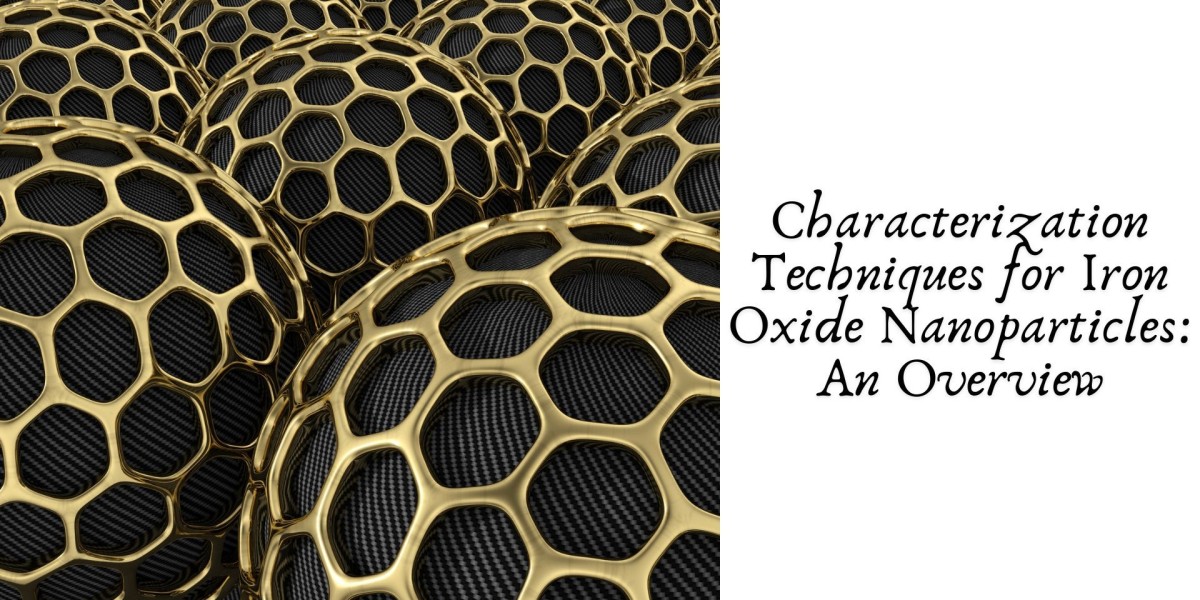Iron oxide nanoparticles (IONPs) have gained significant attention in various fields, including biomedicine, environmental remediation, and materials science, due to their unique properties such as superparamagnetism, biocompatibility, and catalytic activity. To fully exploit these properties and ensure the effective application of IONPs, a comprehensive understanding of their physical, chemical, and structural characteristics is essential. This overview aims to explore the various characterization techniques used for iron oxide nanoparticles, highlighting their significance and applications.
Introduction to Iron Oxide Nanoparticles
Iron oxide nanoparticles are typically composed of iron oxides such as magnetite (Fe₃O₄) and maghemite (γ-Fe₂O₃). Their small size (usually in the range of 1-100 nm) imparts unique magnetic, optical, and electronic properties that differ significantly from bulk materials. These characteristics make IONPs ideal candidates for a variety of applications, including targeted drug delivery, magnetic resonance imaging (MRI), and water treatment. Characterizing these nanoparticles is crucial for understanding their behavior and functionality in different environments.
Common Characterization Techniques
Characterizing iron oxide nanoparticles involves various techniques, each providing different insights into their properties. Below are some of the most widely used methods:
Transmission Electron Microscopy (TEM)
TEM is a powerful imaging technique that provides high-resolution images of nanoparticles. It allows researchers to observe the morphology, size distribution, and aggregation state of IONPs at the nanoscale. TEM can also be coupled with energy-dispersive X-ray spectroscopy (EDX) for elemental analysis, enabling the identification of the chemical composition of the nanoparticles.
Scanning Electron Microscopy (SEM)
SEM provides detailed surface morphology and topographical information about iron oxide nanoparticles. It offers lower resolution than TEM but is valuable for examining larger areas and assessing the agglomeration and dispersion of nanoparticles in various matrices. SEM can also be combined with EDX to analyze the elemental composition of the sample.
X-ray Diffraction (XRD)
XRD is a non-destructive technique used to determine the crystalline structure of iron oxide nanoparticles. By analyzing the diffraction patterns, researchers can identify the phase composition (e.g., magnetite or maghemite) and crystallinity of the nanoparticles. XRD also provides information on the average crystallite size using the Scherrer equation.
Dynamic Light Scattering (DLS)
DLS is employed to measure the hydrodynamic diameter of nanoparticles in suspension. This technique is particularly useful for assessing the stability and agglomeration behavior of iron oxide nanoparticles in liquid media. DLS can also provide information on the zeta potential, which is indicative of the surface charge and stability of the nanoparticles in suspension.
Fourier Transform Infrared Spectroscopy (FTIR)
FTIR spectroscopy is used to identify functional groups and chemical bonds in iron oxide nanoparticles. By analyzing the infrared absorption spectra, researchers can gain insights into the surface chemistry, coating, and interactions with surrounding molecules. This technique is particularly important for understanding the functionalization of nanoparticles for specific applications.
Thermogravimetric Analysis (TGA)
TGA measures the thermal stability and composition of iron oxide nanoparticles by monitoring weight changes as the temperature increases. This technique helps determine the amount of organic coatings, stabilizers, or other materials associated with the nanoparticles, providing insights into their thermal properties and stability under different conditions.
Magnetic Characterization
Given the unique magnetic properties of iron oxide nanoparticles, magnetic characterization techniques such as vibrating sample magnetometry (VSM) and superconducting quantum interference device (SQUID) magnetometry are critical. These techniques allow researchers to measure the magnetic susceptibility, saturation magnetization, and superparamagnetic behavior, which are essential for applications in magnetic drug delivery and hyperthermia treatment.
UV-Vis Spectroscopy
UV-Vis spectroscopy is employed to analyze the optical properties of iron oxide nanoparticles, particularly in the context of their application in photothermal therapy and imaging. By studying the absorption and scattering spectra, researchers can gain insights into the size, shape, and electronic properties of the nanoparticles.
Importance of Characterization
Effective characterization of iron oxide nanoparticles is crucial for several reasons:
- Quality Control: Ensures reproducibility and consistency in the synthesis of nanoparticles for specific applications.
- Performance Optimization: Helps tailor the properties of IONPs to enhance their effectiveness in targeted applications, such as drug delivery and environmental remediation.
- Safety Assessments: Understanding the physicochemical properties of nanoparticles is essential for evaluating their biocompatibility and potential toxicity in biological systems.
Conclusion
The characterization of iron oxide nanoparticles is a multifaceted process that involves various techniques, each offering unique insights into their properties. A comprehensive understanding of these properties is essential for optimizing their performance in a wide range of applications, from biomedical to environmental. As research progresses, the development of advanced characterization techniques and the integration of multiple methods will further enhance our ability to study and utilize iron oxide nanoparticles effectively.
By leveraging these characterization techniques, researchers and practitioners can unlock the full potential of iron oxide nanoparticles, paving the way for innovative solutions in diverse fields.
Naijamatta is a social networking site,
download Naijamatta from Google play store or visit www.naijamatta.com to register. You can post, comment, do voice and video call, join and open group, go live etc. Join Naijamatta family, the Green app.
Click To Download


